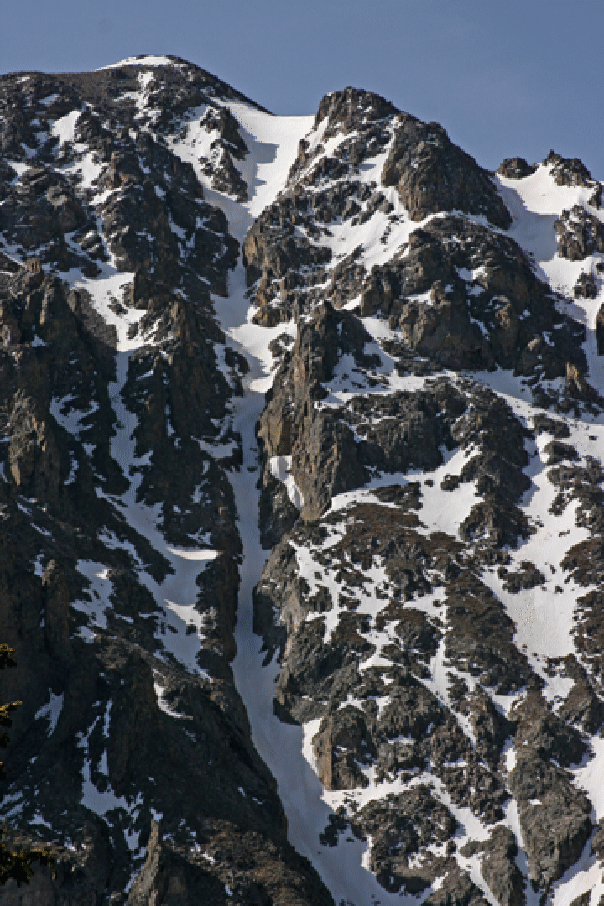
East East Peak of Red: What Big Eyes You Have
On May 28, 2007, Dave Bourassa skied this solo. Two friends were going to join him but the group got separated and the friends ended up at Red Buffalo Pass. I was positioned on the trail on the opposite valley with a telephoto lens and got the following photos. Dave let out a large whoop at the bottom! He reports it as being a consistent 40-45 degrees, with the most striking aspect being how deeply cut the couloir is. The difficulty here is the narrowness, and knowing that it is nicely filled in. A week later Joe Kramarsic climbed it from the bottom. Here is a shot of the line before Dave jumped in.
Timeline: Dave's group started at 6:10. Dave summited at 10:40. I arrived at the photo spot at 9:30. Dave dropped in at 1:15. So I was at the photo spot for four hours. But, all said and done, it was worth it! One week later Joe Kramarsic camped out near the photo spot, climbed the couloir using boots and axe (no crampons) the next morning, and descended Little Red Riding Hood. He reports that the couloir is 1900 feet long and is the most esthetic such feature in the entire Gore Range.

Here is a view of the Big Eyes line in context, with Little Red Riding Hood to the left.
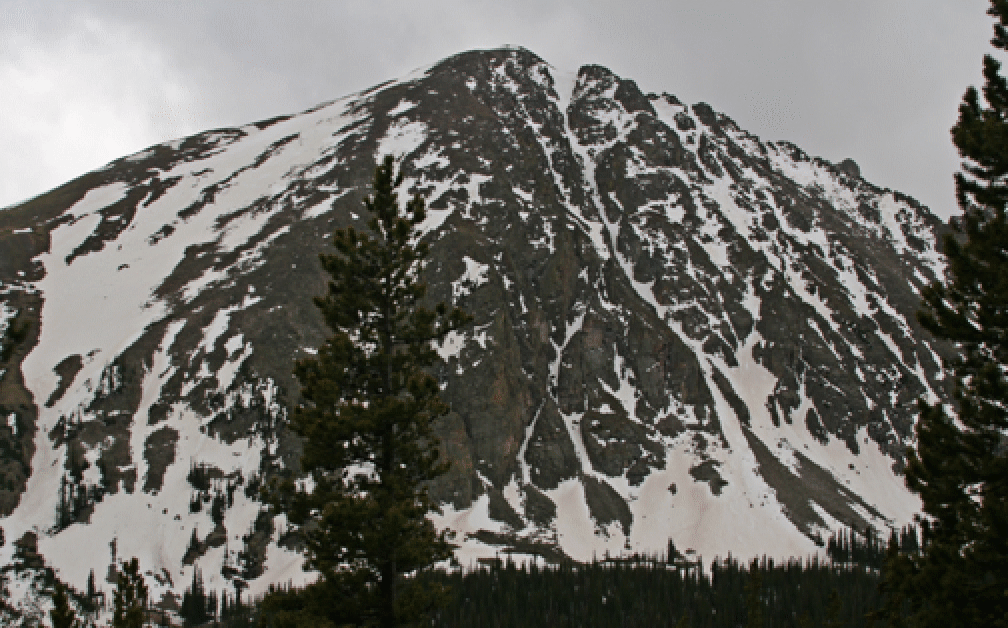
And here Dave approaches the steep and narrow section.
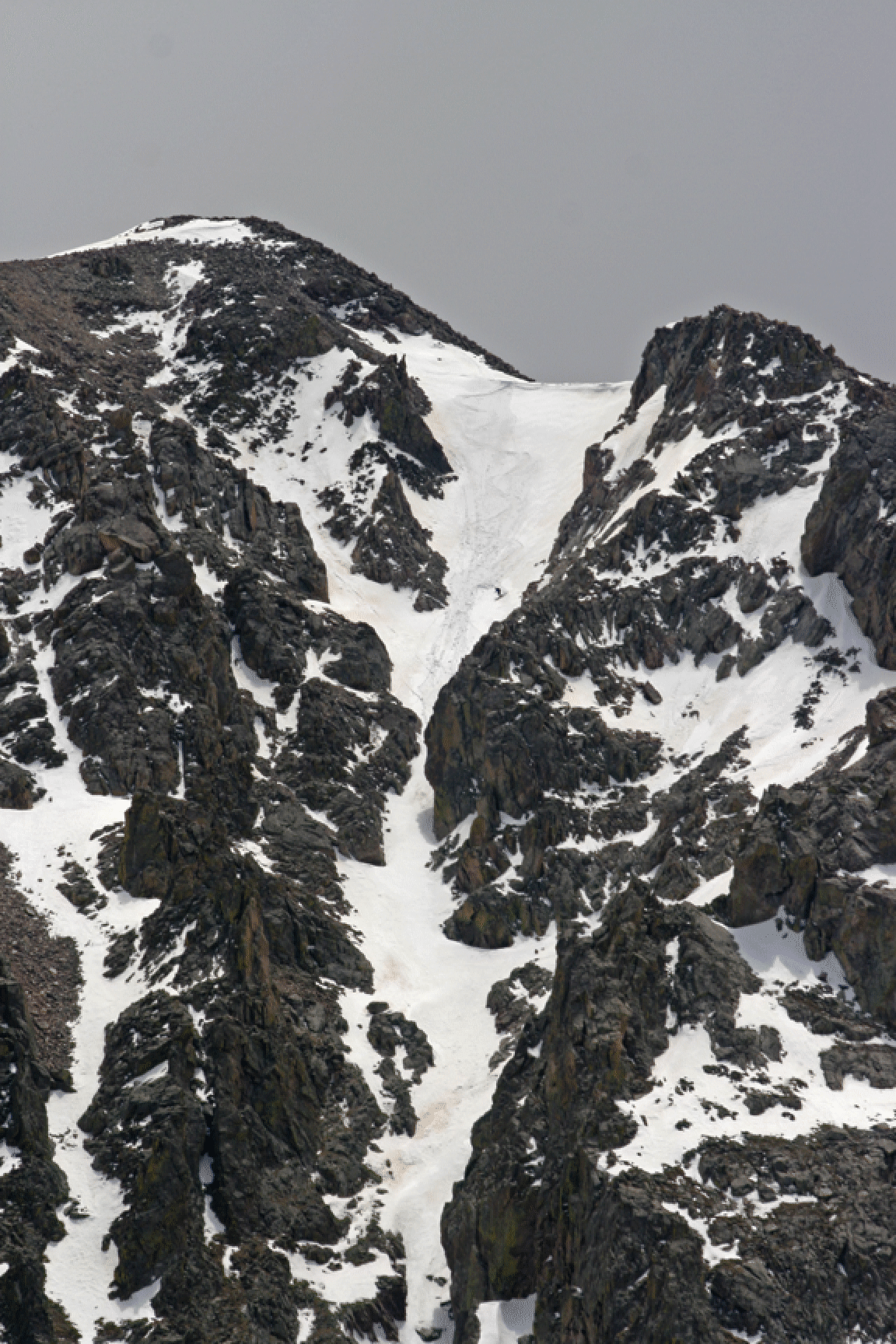
Here's the view from behind the retina. Photo by Dave Bourassa.
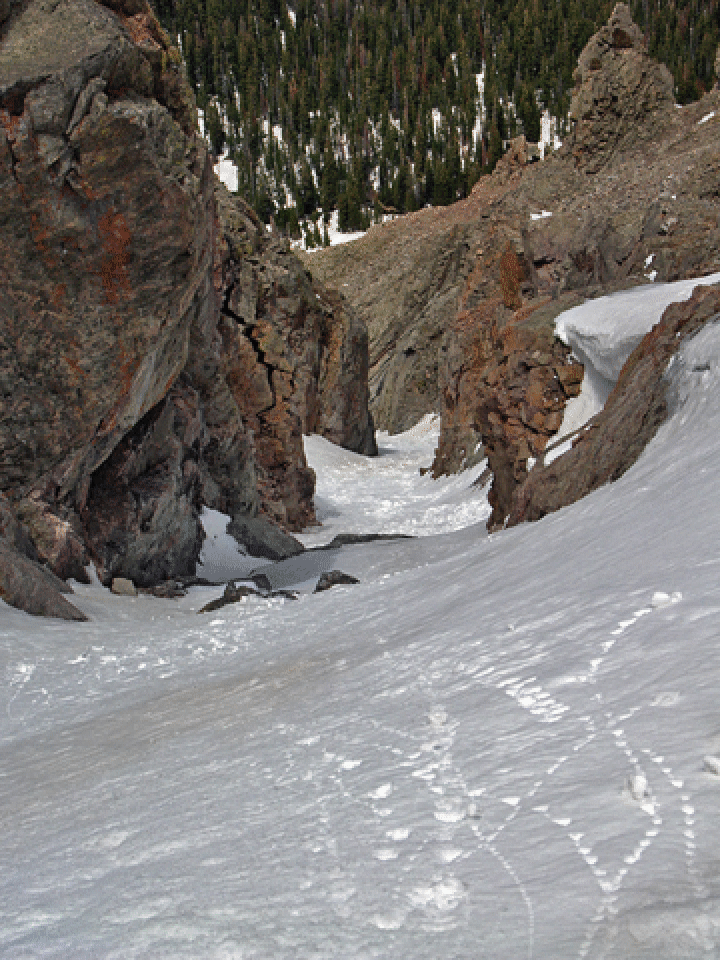
A trip report appeared at Teton Gravity Research (http://www.tetongravity.com/forums/showthread.php?t=86368) and also a photo appeared in the Summit Daily News of Saturday, June 2, 2007.
On June 14, 2008, Andy Dimmen and friends climbed and skied it and found perfect conditions. He has now skied it multiple times and writes: "It is hard to capture just how inset the couloir is. It is truly the stuff of dreams." Some images of their ascent and descent follow.
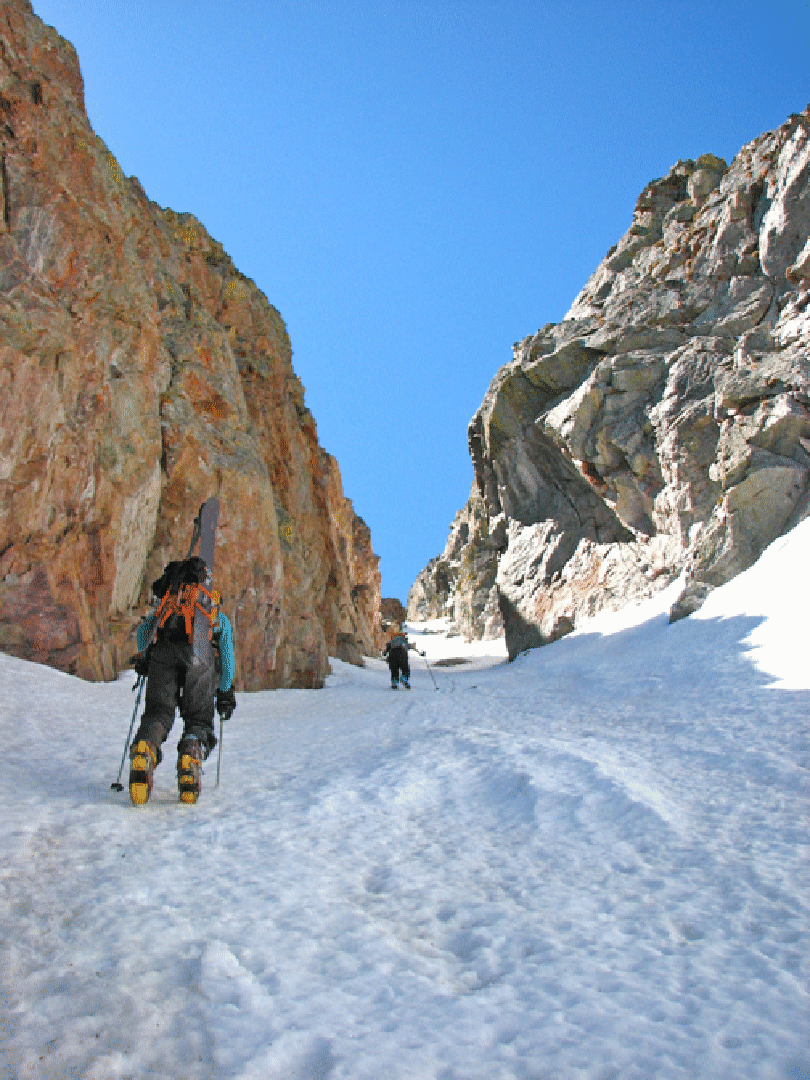
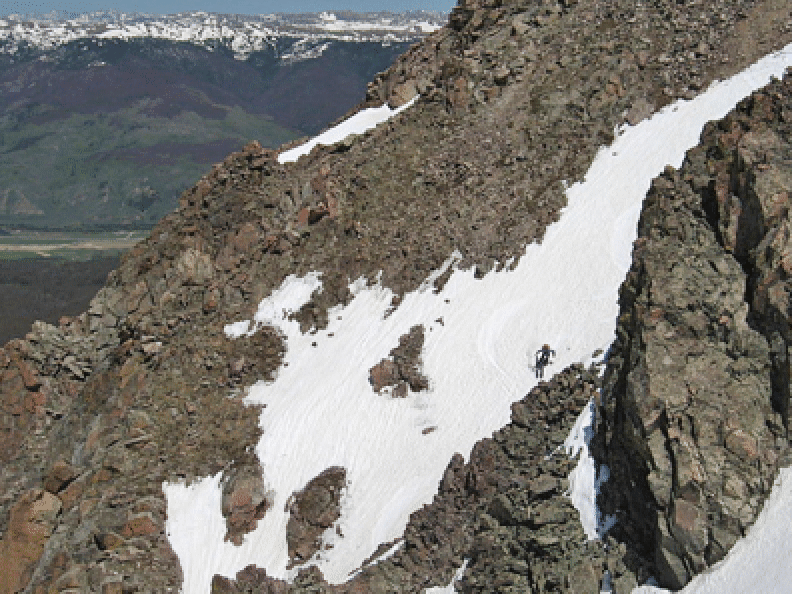
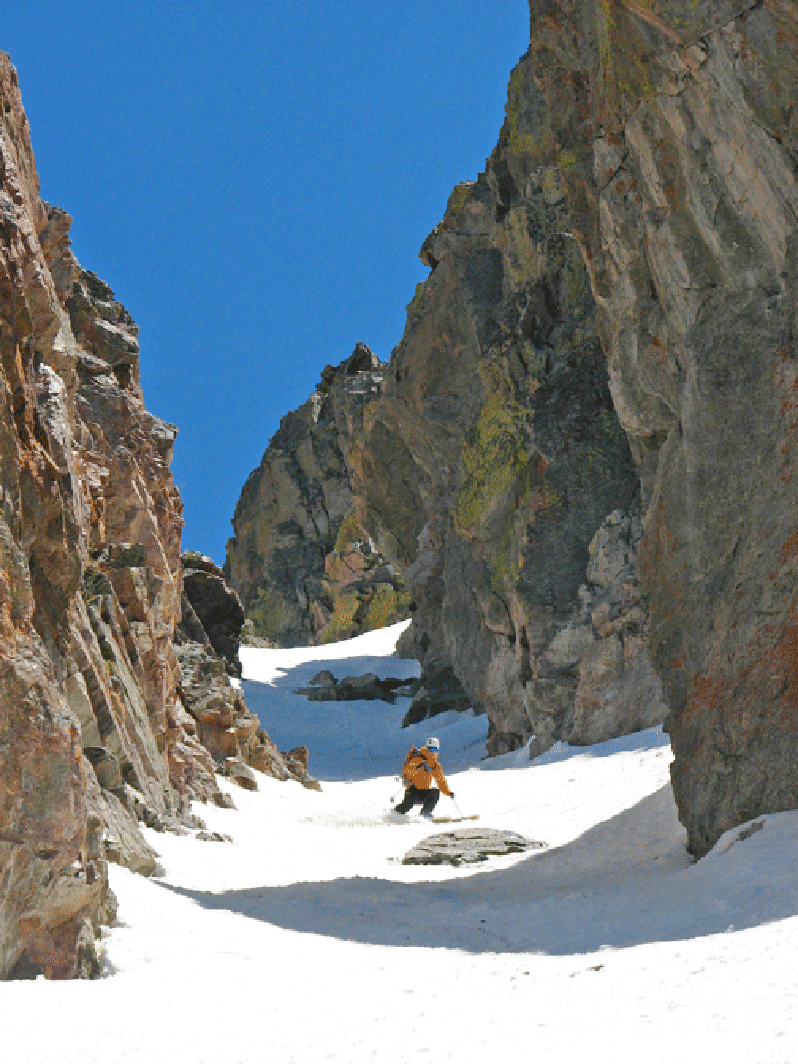
A group from Steamboat Springs (Josh Karzen + 3) did this in mid-March 2009. Here are two photos. The first nicely shows the view from the top of the drop-in; East Thorne prominent. And then a shot of the heart of the narrow couloir.
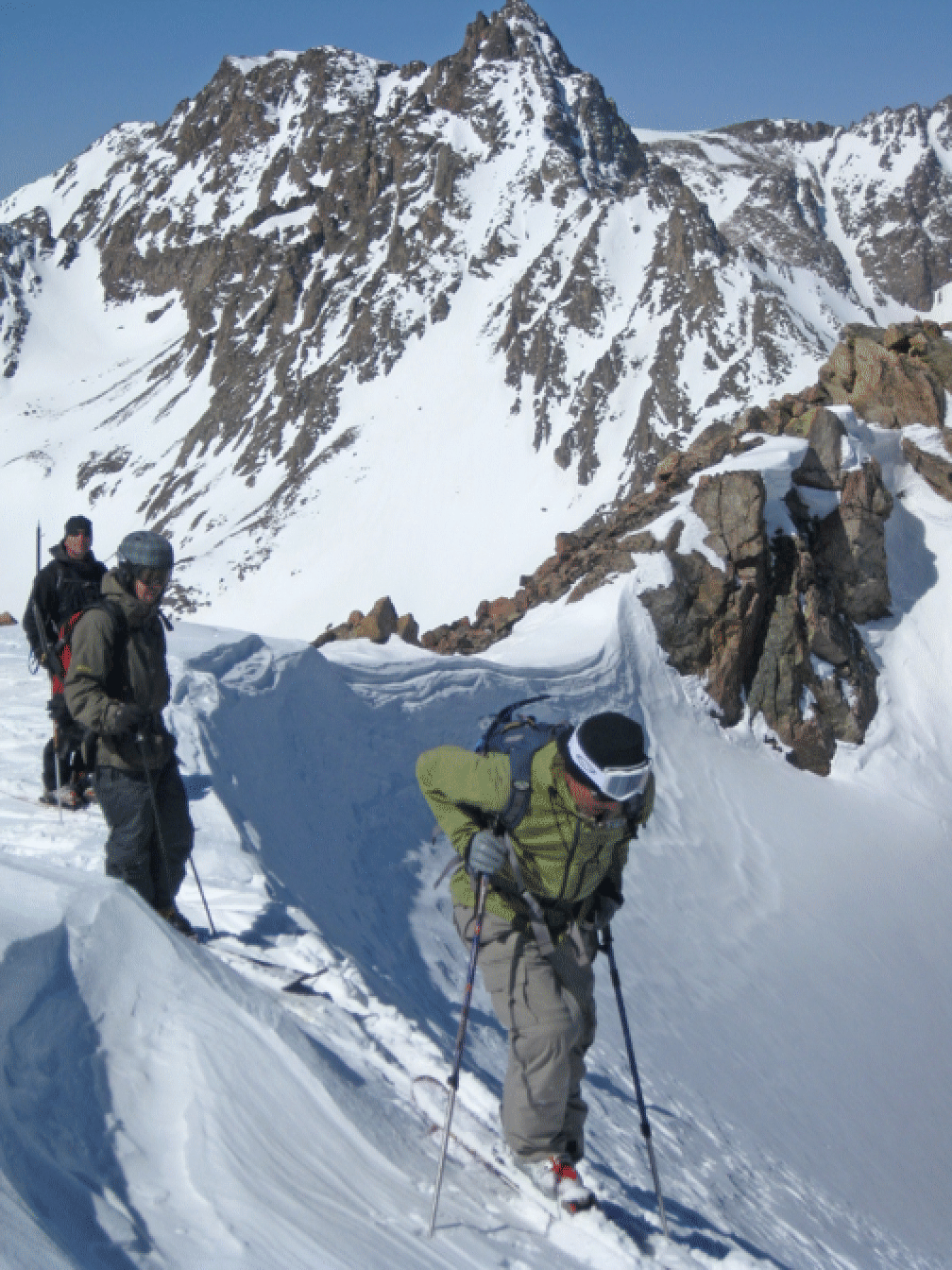
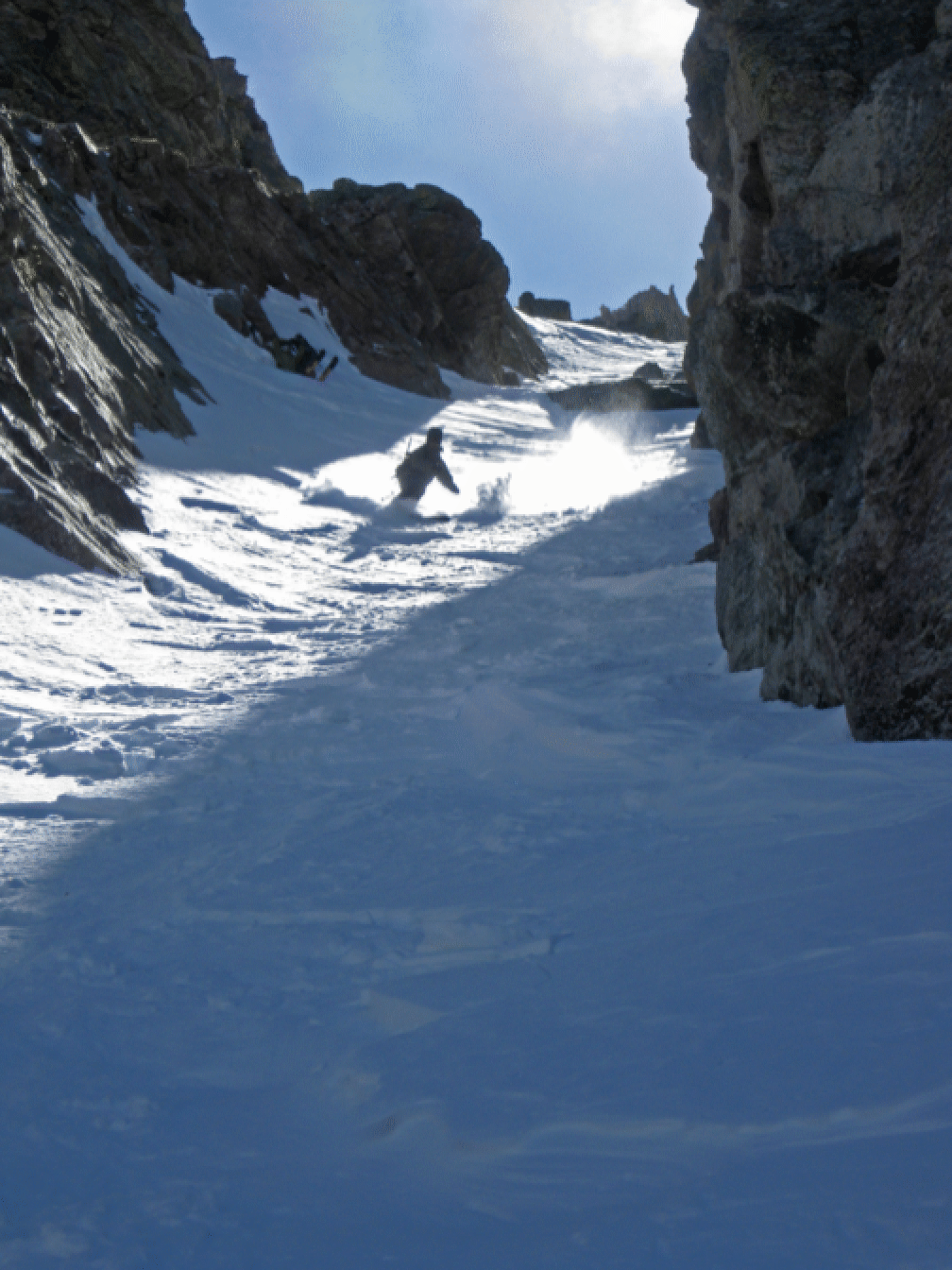
Here is a mid-winter view of Big Eyes from Rain shoulder, Jan. 13, 2011 (during an ascent by Jonathan Kriegel and me to Rain summit on skis). Awesome looking.
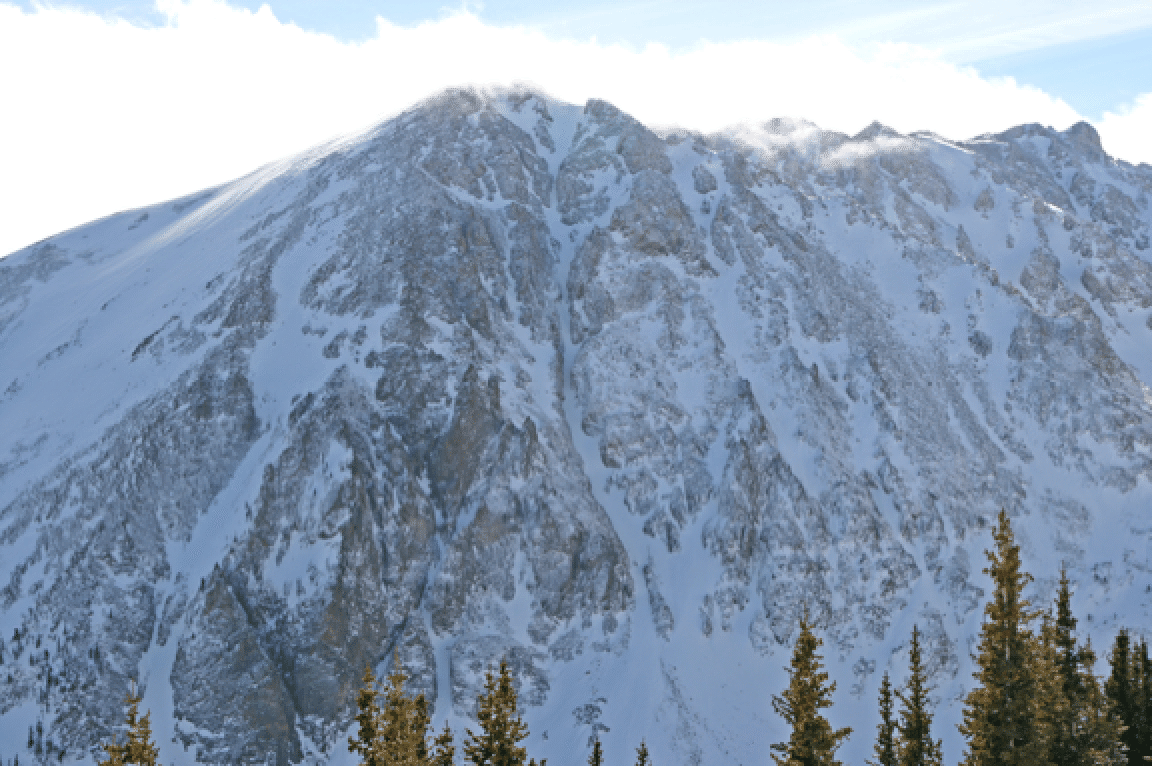
Here’s a nice shot by Elliot Halverson for late June, 2011. The skier is Tanner Rainville.
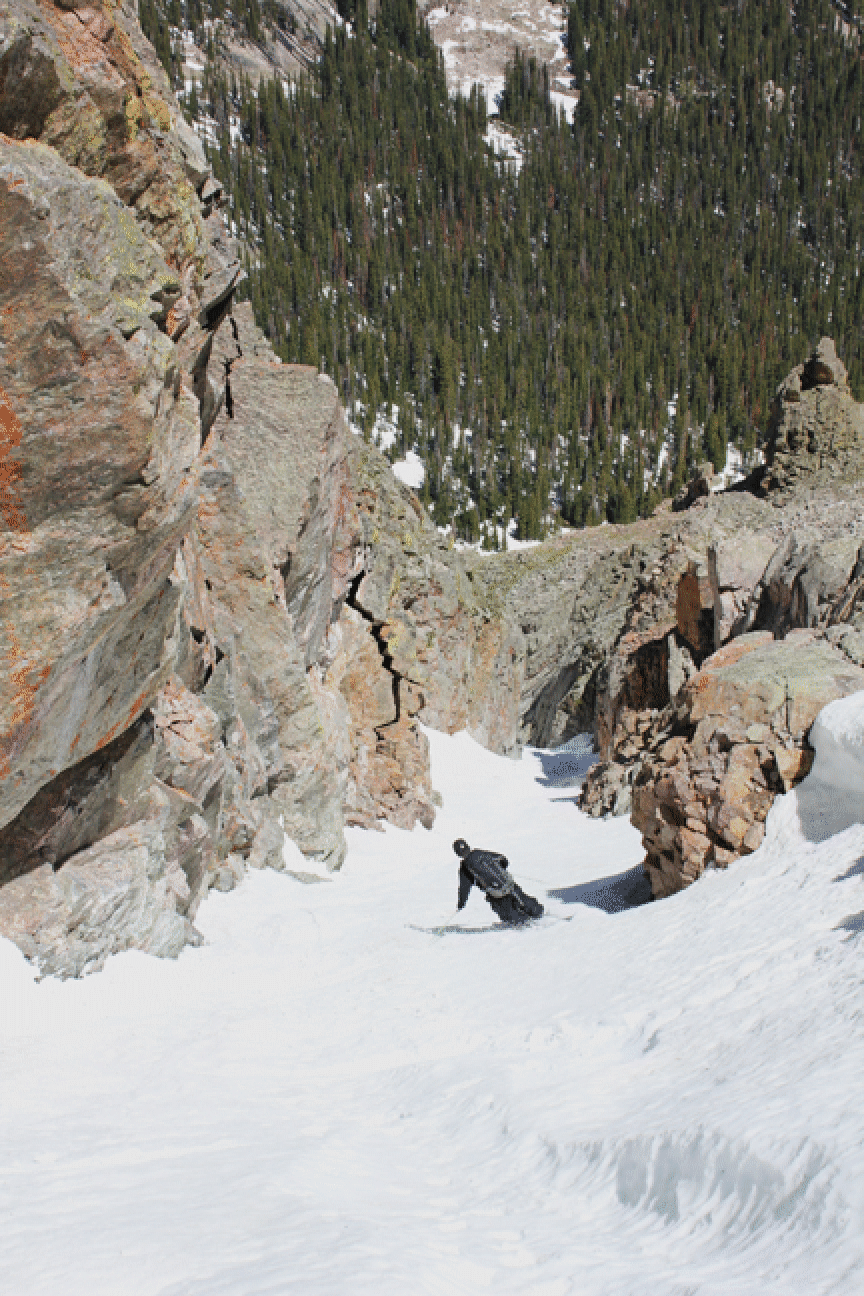
This route is probably the most serious route that appears on my web page. On Feb. 6, 2017, CAIC reported the following anonymous “observation” of an avalanche in Big Eyes that could have had more serious consequences than it did. Here is the report.
“A dusting of new snow at the parking lot, increasing to around 6 inches at 11,000 ft. We set an anchor atop the couloir and I preformed a “hasty” pit as well as two ski cuts while on belay. I found around 4-8 inches of extremely light-density snow on top of a thick homogenous slab of snow (1F hardness) that went beyond 1.3m deep (the extent of my digging). The overlying snow was not cohesive at all and there was no evidence of slab formation.
“After deciding we were comfortable with the snow stability, I proceeded to ski the first pitch of the chute. After 10 turns or so the snow became much deeper and I stopped to yell up to my partner to not venture any further than skier’s left of my tracks in the chute. Another few turns and I paused again, feeling very uncomfortable now in 18 inches of new snow. At this point in time I was two turns away from our first safe zone and the entrance of the four skiers’ tracks just an hour or two prior of us. The chute “Y’s” at the top and they had used the eastern entrance. It was during this next two turns where the slab released. I was then carried down the entirety of the couloir while my partner watched in horror. I came to rest sitting up as the debris slowed down after a brutally violent ride nearly 1500 feet long. It is nothing short of a miracle that I sustained no major injuries. I lost both skis and poles in the slide. The debris however was only 2-3 feet deep at most, not that much snow moved. I would suspect the slab was around 75 ft. x 100 ft and 18 inches deep. SS-ASu-R3-D2. I should have been Colorado’s 1st fatality this season. Don’t let this season’s somewhat atypical Colorado snowpack lure you into terrain of high consequence without proper risk assessment and confidence in your decision-making abilities. I was overly confident that the conditions I found while on the belay at the top of the chute would be the most suspect stability-wise. After deeming the entrance safe I should have been more diligent in my ongoing observations of the snow. I also should have trusted my intuition when I stopped for the second time due to the deeper snow farther down the couloir. Two turns away from a safe zone and 4 tracks from the same day also gave me a false sense of security and I proceeded without doing a thoughtful reassessment of the conditions. Do not underestimate the potential for unsuspecting large loads in couloirs such as this one, a dusting at the car and I ended up triggering an 18-inch soft slab. I plan to write a more in depth analysis of the day at some point once I have fully processed the situation. Be thankful for the beautiful mountains we get to plan in and live to ski another day.”
One April 15, 2020, there was a fatal avalanche in this couloir: Aaron Wiener was carried all the way down the route and died from injuries sustained in the slide. His two companions were not carried down and were uninjured.